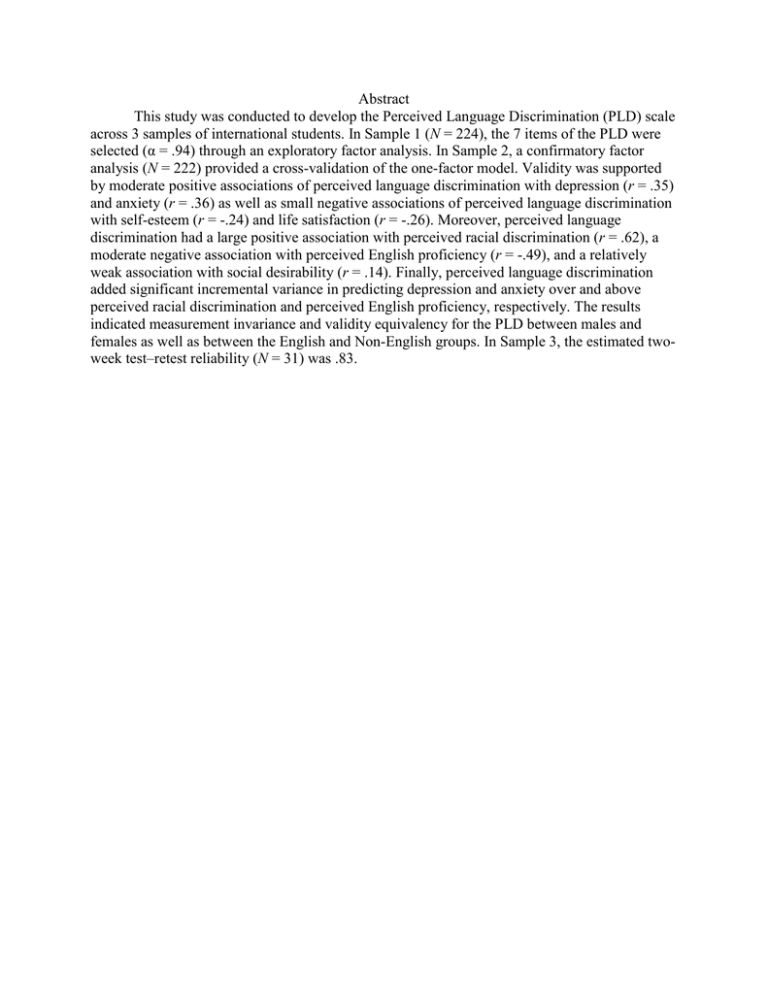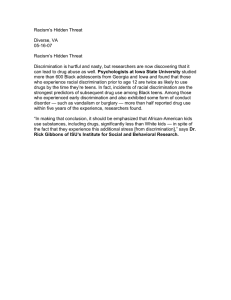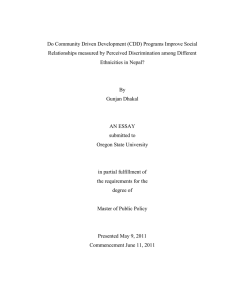Abstract This study was conducted to develop the Perceived Language Discrimination... N selected (α = .94) through an exploratory factor analysis. In...
advertisement

Abstract This study was conducted to develop the Perceived Language Discrimination (PLD) scale across 3 samples of international students. In Sample 1 (N = 224), the 7 items of the PLD were selected (α = .94) through an exploratory factor analysis. In Sample 2, a confirmatory factor analysis (N = 222) provided a cross-validation of the one-factor model. Validity was supported by moderate positive associations of perceived language discrimination with depression (r = .35) and anxiety (r = .36) as well as small negative associations of perceived language discrimination with self-esteem (r = -.24) and life satisfaction (r = -.26). Moreover, perceived language discrimination had a large positive association with perceived racial discrimination (r = .62), a moderate negative association with perceived English proficiency (r = -.49), and a relatively weak association with social desirability (r = .14). Finally, perceived language discrimination added significant incremental variance in predicting depression and anxiety over and above perceived racial discrimination and perceived English proficiency, respectively. The results indicated measurement invariance and validity equivalency for the PLD between males and females as well as between the English and Non-English groups. In Sample 3, the estimated twoweek test–retest reliability (N = 31) was .83.






